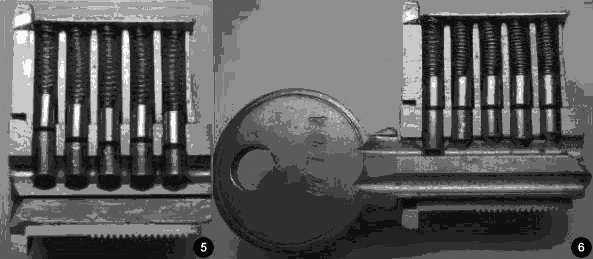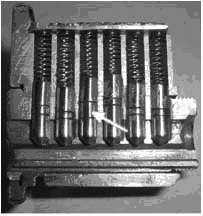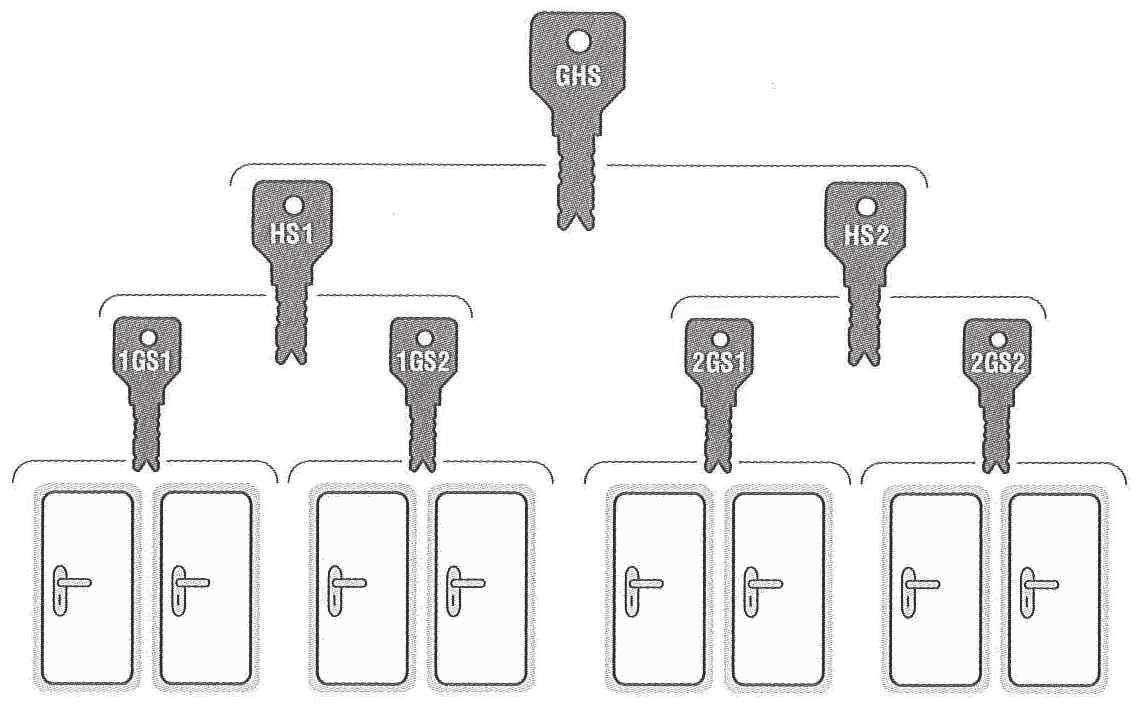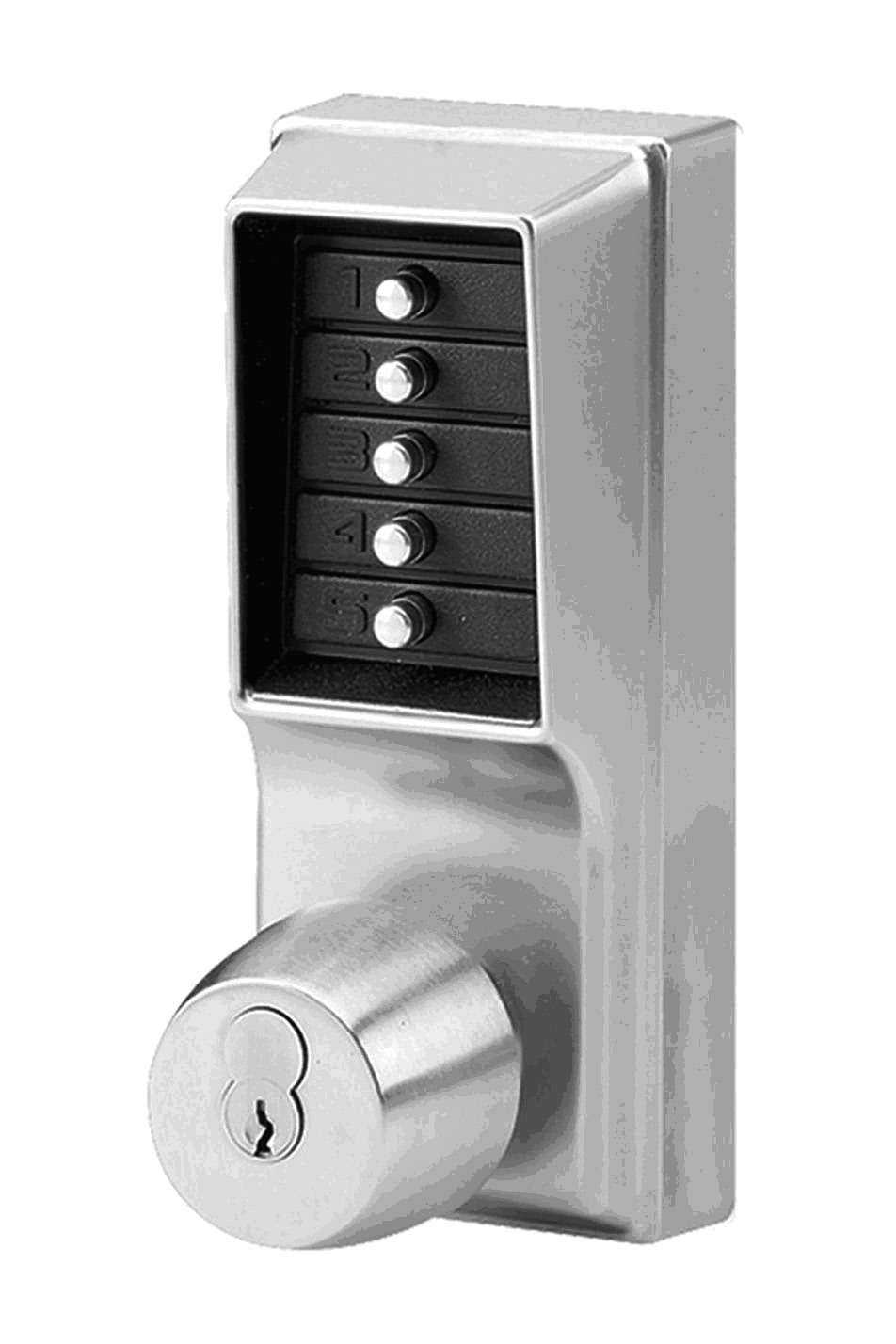Unlocking the Secret of Keys
by James Hunter
As a teenager, I was always interested in locks and keys, and always wanted to learn more about them. My biggest leap forward came from garbage picking! Specifically, when walking home from school, I would go down a back laneway behind a hardware store and go through their garbage bin. One day I hit the jackpot! They were throwing out binders full of information about multiple keying systems.
A single key system has two pins in each cylinder and they must all line up in order for a key to open the lock. Only one key can open this lock.
A master keying system is more flexible. The system works like this in our high school: There could be a key that only works on one door, or a key that works for a whole department such as the math department, or a key that works on all doors in the school. Typically, a department head would have the key for his department, and the principal would have a key for the whole school.
The binders had pictures of cut open locks, showing how the various keys worked. Each of six cylinders could have multiple pins in them. By filing down a key blank, I could "consume" all the pins (except the top one) and make a master key.
My first step was to acquire a key blank (or several). This can be done either from a hardware store if you tell them you are studying lock-smithing or by mail order.
My next challenge was to secure a lock, make a master key, and return the lock. I did this one weekend, taking away a lock from a washroom and putting in a dummy lock.
Then I placed the lock in a vise and carefully removed each row of pins, making sure to keep the correct order. This is the most crucial step, since if you mix up the pins, the original key will not work. There has to be a pin at the top and a spring, then the remaining pins are on the bottom.
Once I'd done this, it was a simple matter to file the key for each pin location for the depth to make a master key. I then had to reassemble the lock with the pins in the proper order.
Once I had my key, I replaced the lock and they were none the wiser. This key let us discover and explore all kinds of cool areas of the school, such as the steam pipe tunnels in the subbasement and the disused greenhouse on the roof. We also explored crawl spaces in the ceiling of the auditorium where there was access to change light bulbs several stories up!
These days, all this information can be looked up on the web.
One trick I especially like is opening the five-pin button manual door locks by Simplex.
A few tricks with these: The default code coming from the manufacturer is: 2-4, 3
That is, press buttons "2" and "4" at the same time, then button "3".
When installing the locks, often people fail to change the default code. The other trick is that on the most used buttons, the numbers are shiny from people pressing them so often. This reduces the combination of buttons to press and makes it easier to guess the combination.



